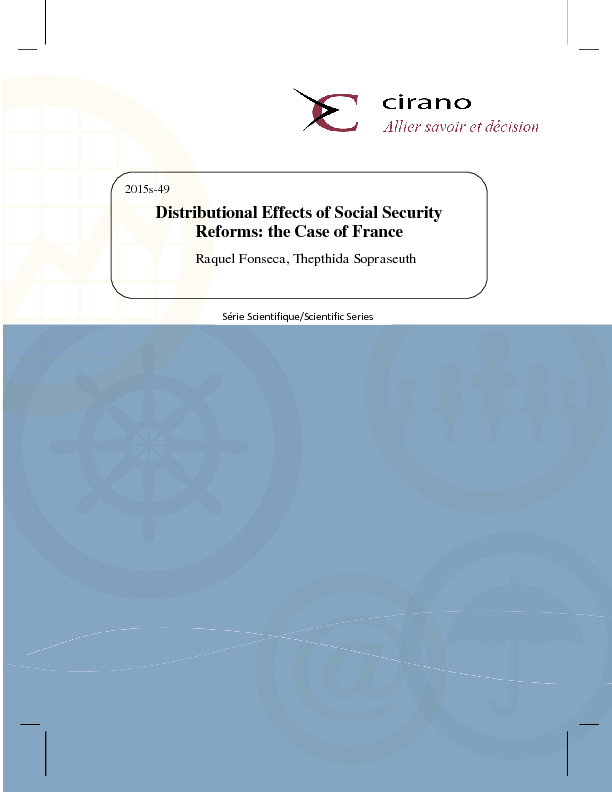Distributional Effects of Social Security Reforms: the Case of France
This
paper uses a calibrated dynamic life-cycle model to quantify the long-run distributional
impact of two opposite Social Security reforms: modifying the parameters of a
defined benefit (DB) plan (such as in France with Ayrault’s reform) or
switching to a notional defined contribution (NDC) plan (such as in Italy).
Both reforms yield an inequal distribution of welfare losses. Low-skilled
workers are the main losers of the reforms. This is so for different reasons in
each reform. In the case of Ayrault’s reform, low-skilled individuals delay
retirement by 2 years, up to age 62. In switching to a NDC scheme, low-skilled
workers’ pensions fall substantially. In NDC schemes, inequalities along the
working-life are directly translated into inequalities in pension levels. The
switch from a DB plan to the Italian reform yields substantial welfare losses,
pensions drastically fall, and individuals save more. Since low-skilled workers
do not save as much as middle or high-skilled workers, the switch to NDC
schemes leads to a more unequal society in terms of asset distribution.
[ - ]




